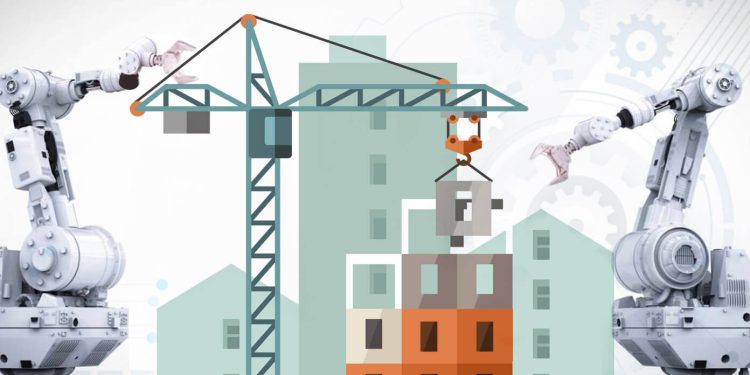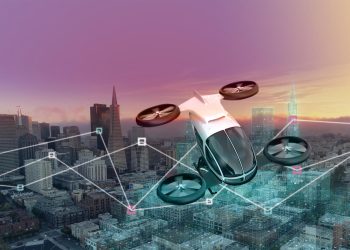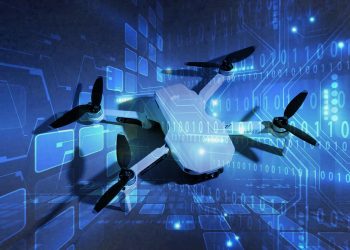The construction business is one of the major economic areas, highlighting manual-intensive task as its essential wellspring of productivity. Be it a new-fangled construction, renovation, or demolition, the robotics technology doesn’t play a crucial role in any of their processes or a building’s lifecycle. In fact, construction is one of the least digitized or automated industries across the globe.
While the manual mission is an enormous construction component, innovation is gradually infused to this segment since the emergence of first pulleys and power tools. Particularly, robots, autonomous vehicles, drones, 3D printing, etc., are beginning to get the construction work done rapidly and at ease. With the shortages of skilled labor, these technologies can meet the continued demand and economic growth.
The modern robotic technology has the potential to revolutionize and provide numerous advantages to the construction professionals. This article includes some of such advantages of this system in the construction industry, discusses its on-going impact, and what to expect in the future.
Imaging and 3D Modelling Technology
3D design and modeling have been here for a long time and have provided solutions in various fields. From the gaming sector to the medical industry, this superior technology is used to make hypnotic CGI characters and scan a patient’s body to cure their ailments. The same 3D technology helps constructors today by helping them design single-story houses and complex buildings comprising unique extensions and arches.
It gives you an exceptional knowledge of the design by letting you create independently from the building’s possible perspectives. It allows more precise calculations for construction materials and thereby prevent wastages.
Doxel Inc. is one such robot that does the same. It is utilized to check and survey the advancement of a task by navigating the building site. The data collated by the robot is leveraged to identify potential threats in the early stage. Here, the data is stored in the cloud, which is then filtered through a deep-learning algorithm to find and trace more minute details.
For instance, it can point out if a ventilation duct is installed correctly or not, reducing the costly revisions in the future.
Bricklaying Mechanism to Build Walls
Bricklaying robots with long arms are used by construction firms to accurately lay brick, foam, or other materials on several projects. Semi-Automated Mason (SAM) is one such robot that’s good at building walls. Built by New York-based Construction Robotics, it pledges to build workforce efficiency while diminishing labor costs.
SAM can lay blocks at a rate of 3X times quicker than any human without being worn out or committing errors. HadrianX from Australia-based FBR Ltd is another famous bricklaying robot that has witnessed wide-spread usage in the modern construction firm. This gadget utilizes a wise control framework supported by CAD to quantify the important materials and the developments for bricklaying.
HadrianX can build the walls in a single day faster than any of the conventional methods. Moreover, it is designed to calculate environmental fluctuations in real-time, such as movement caused by wind or vibrations, to improvise precision during the building process. Robots like Hadrian and SAM provide safer work environments and augments staff productivity.
Surveillance, Surveying, and Inspection
Construction firms require a lot many assessments before, during, and after completion of a project. It requires the survey of a worksite, and the encompassing territory, while simultaneously controlling workers and securing the site. Construction robots and drones can help professionals in these areas of surveillance, surveying, and inspection.
For example, aerial drones and ground-based robots can be used to survey a construction site and gather various data. Augmented reality and virtual reality lets the site managers and the operators get a real feel of what the drones are seeing. VR headset will provide them with the immersive experience remotely, so one don’t have to be on the site to get an accurate assessment. The video feed can be stored for a later time, offering yet another crucial resource.
Besides, surveillance robots can also act as a security solution in construction space. Ziva is an image-capturing, two-wheeled robot that does likewise. It travels up to 11 mph with 12-hour battery life. It uses cameras and facial recognition software to perceive individuals and vehicles present in the place of work and in the event that they’re permitted to be around there.
Autonomous Equipment
Major automakers and technology companies were already developing autonomous vehicles. Now, the same autonomous vehicles can be used in the construction industry as well. These robots can help them in carrying supplies and materials from one place to another. Volvo’s HX2 is one of the prominent autonomous and electric load carriers used by the constructors worldwide. It can move substantial loads without extra info.
HX2 does not require any driver to operate the carrier. Instead, it leverages digital logistics-driven control system to identify humans and other obstacles on the path. Similarly, another company, by name Built Robotics offers autonomous bulldozers and excavators to the construction site. Their AI guidance framework moves the equipment to their desired location and guarantees the essential work is finished safely and unequivocally.
Self-sufficient vehicles in the construction industry are not proposed to supplant physical work all in all. Instead, it increases work efficiency and safety.
Remote Operations
The Internet of Things, digitization, and additive manufacturing are contributing to the growth of remote operations in the construction industry. Painting drones are a phenomenal example here. One can control these drones through their tablet or smartphone application, and report on the assembled data in the cloud.
Some of the semi-autonomous vehicles use remote-control technology to simplify their tasks. For instance, project managers can utilize this innovation to convey rules and outstanding orders to their staff members in a split second. Barcelona-based Scaled Robotics is good at taking care of remote operations. It offers construction robots that can be distantly overseen utilizing cell phones.
This uncrewed vehicle can wander around a building site and accumulate basic data using various sensors. This information is then moved to the cloud, where it’s leveraged for building information modeling (BIM) of the development venture.
Conclusion
As a highly un-automated industry, construction robots are foreseen to have a significant influence on this segment. With the improved effectiveness and profitability, demand for construction robots will soon be growing across various regions. From structuring through inspection and maintenance, constructors can fully receive the rewards of applying automation in the coming days.







